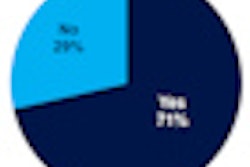Dr. David Vining, a professor of diagnostic radiology and the medical director of the Image Processing and Visualization Laboratory at MD Anderson Cancer Center, will demonstrate the software, which may represent a major change in the way that radiology reports are generated.
VISion software allows a radiologist to both view and speak naturally about image findings while generating a multimedia structured report. As a radiologist comments about image findings that are being viewed, key images and audio clips are captured either when a microphone button is pressed or triggered by an eye-gaze dwelling time. These data are transmitted to a server for processing, where anatomy and pathology terms are extracted from the speech and used to tag image findings. Data are organized by anatomical locations in a unique graphical display of a patient with superimposed image findings.
The software also has the ability to link image findings between serial examinations and generate disease timelines to create a visual historic record. Its other features include the ability to data mine radiologic information, automate translation of reports to foreign languages using standardized lexicons, and produce audit trails of any modifications to prior findings.
The software will also be shown in a poster presentation (LL-INS-WE7B) on Wednesday, November 30, from 12:45 p.m. to 1:15 p.m. in the Lakeside Learning Center.



















